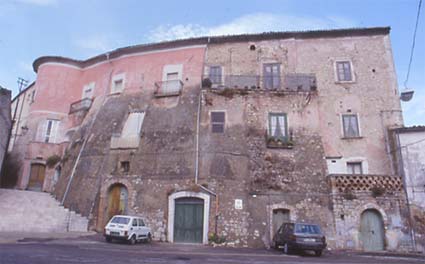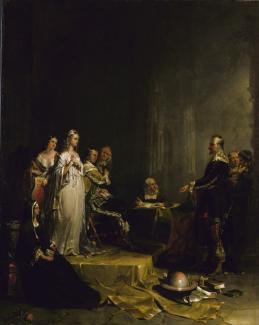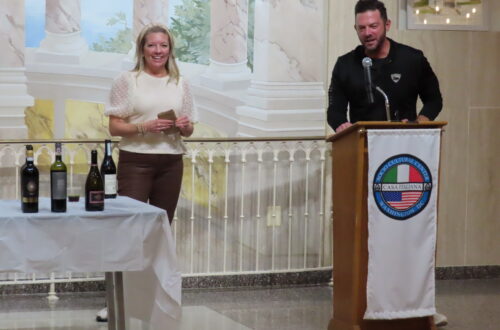
Rotello

By Nancy DeSanti

Province of Campobasso, Region of Molise
The small town of Rotello is located about 30 kilometers (19 miles) northeast of Campobasso. in the province of Campobasso. It has about 1,190 inhabitants, called Rotellesi.
The small center rises in a strategic position between the rivers Fortore and Trigno, near to the Adriatic coast, on hills cultivated with olive trees of varieties that produce a renowned extra virgin olive oil. Since 1994, the municipality is part of the association “Le città dell’olivo” (The cities of the olive tree).
There are diverse hypotheses on the origin of the name of the community of Rotello. According to the majority of historians, the name derives from the Latin “Lauritellus”, land of the bay tree.
Founded by the Normans in the middle of the 12th century as Loritello, it was for a long time a very important Molise town. The name Rotello is strictly associated to that of the Norman Counts of Loritello. In the Angevin period, the community was given to the D’Alemagna family, which was followed by the Sanframondo family in the 14th century and the Boccapianola family in the 15th century. This last family held Rotello until 1792, when it was included in the royal lands.
The historical center conserves the characteristics of the medieval town, with houses arranged in rows, separated by narrow streets, all converging in the town square where there was the most grand church of the town, but it is not there now. Massive and imposing, the Colavecchio Palace dominates the historic center of Rotello. An ancient arch of stone through which tourists are able to reach the medieval fortress of Loritello is still today one of the ways of entry into the medieval town.
On the walls and on the arches of the town, visitors are able to admire Latin writings and carved stones among which there is a fragment of a Norman relief with a wolf and a figure of a little girl in front of a house, where, according to the tradition, there was “the wheel” for the care of the abandoned babies. The little girl is interpreted as the most ancient image of Little Red Riding Hood.
The tradition of Rotello in the production of olive oil is centuries old, but still modern. The rural zones of Rotello have even given the name to two ecotypes of olive oil, recognized from the Roman epoch: the “Rosciola di Rotello” and the “Cellina di Rotello.”
From many generations ago, there exists olive oil of excellent quality. This quality is due to the respect of the ancient traditions, in particular to the care of the olive trees, that are cultivated with simple procedures, few invasive interventions, in harmony with the time and the rhythm of the seasons. The people of Rotello attribute this quality to a productive process that avails itself of the experience rooted in the Rotello people who pay particular attention to the phases of the harvest.
The attractions of the place:
— Church of Saint Mary of the Angels
— Colavecchio Palace
Dates to remember:
— August 7 – Feast of Saint Donato, the patron saint
Sources:
https://en.wikipedia.org/wiki/Rotello
https://www.italyheritage.com/regions/molise/province-campobasso/rotello.htm
http://www.morronedelsannio.com/molise/eng_molise/castle_rotello.htm
http://www.oliopangia.com/history-info-rotello-olive-oil-city-italy/
Italiano

Tradotto da Ennio Di Tullio
Provincia di Campobasso, Regione Molise
La piccola cittadina di Rotello si trova circa 30 chilometri (19 miglia) nord-est di Campobasso, nella provincia di Campobasso. Ha circa 1.190 abitanti, detti Rotellesi.
Il piccolo centro sorge in una posizione strategica tra i fiumi Fortore e Trigno, vicino alla costa Adriatica, su colline coltivate con ulivi di varietà che producono un rinomato olio extra vergine di oliva. Dal 1994 il comune è parte dell’associazione “Le città dell’olivo”.
Ci sono diverse ipotesi sull’origine del nome del comune di Rotello. Secondo alla maggior parte degli storici, il nome deriva dal latino “Lauritellus”, terra dell’alloro.
Fondata dai Normanni nella metà del XII secolo come Loritello, fu per lungo tempo un’importantissima paese molisana. Il nome Rotello è strettamente associato a quello dei Conti Normanni di Loritello. Nel periodo angioino, il comune fu dato alla D’Alemagna famiglia, a cui seguirono la Sanframondo famiglia nel XIV secolo e la Boccapianola famigllia nel XV secolo. Questa ultima famiglia tenne Rotello fino al 1792, quando fu compreso nelle terre regie.
Il centro storico conserva le caratteristiche del paese medievale, con le case arrangiate in file, separate da strette vie, tutte convergenti nella piazza del paese dove ci era la chiesa più grande del paese, ma non c’è ora. Massiccio e imponente, il Palazzo Colavecchio domina il centro storico di Rotello. Un antico arco in pietra attraverso il quale I turisti si potevano raggiungere la rocca medievale di Loritello è ancora oggi una delle porte d’ingresso nella paese medievale.
Sulle mura e sugli archi della cittadina, visitatori si possono ammirare scritte latine e pietre scolpite tra cui c’è un frammento di rilievo normanno con una lupa e una figura di una bambina davanti ad una casa, dove, secondo alla tradizione, ci era “la ruota” per la cura dei bambini abbandonati. La figura della bambina è interpretata come l’immagine più antica di Cappuccetto Rosso.
La tradizione di Rotello nella produzione dell’olio d’oliva è secolare, ma ancora moderna. Le zone rurale di Rotello hanno addirittura dato il nome a due ecotipi di olio d’oliva, riconosciuti dall’epoca romana: la “Rosciola di Rotello” e la “Cellina di Rotello”.
Da molte generazioni fa, ci esiste olio d’oliva di eccellente qualità. Questa qualità sia dovuta al rispetto delle antiche tradizioni, in particolare alla cura degli ulivi, che sono coltivati con procedimenti semplici, pochi interventi invasive, in armonia con il tempo e il ritmo delle stagioni. I Rotellesi attribuiscono questa qualità ad un processo produttivo che si avvale dell’esperienza radicata dei Rotellesi che pongono particolare attenzione alla fase della raccolta.
Le attrazioni del luogo:
- Chiesa di Santa Maria degli Angeli
- Colavecchio Palazzo
Date di ricordare:
- 7 agosto – Festa di San Donato, il patrono
January/February 2025





